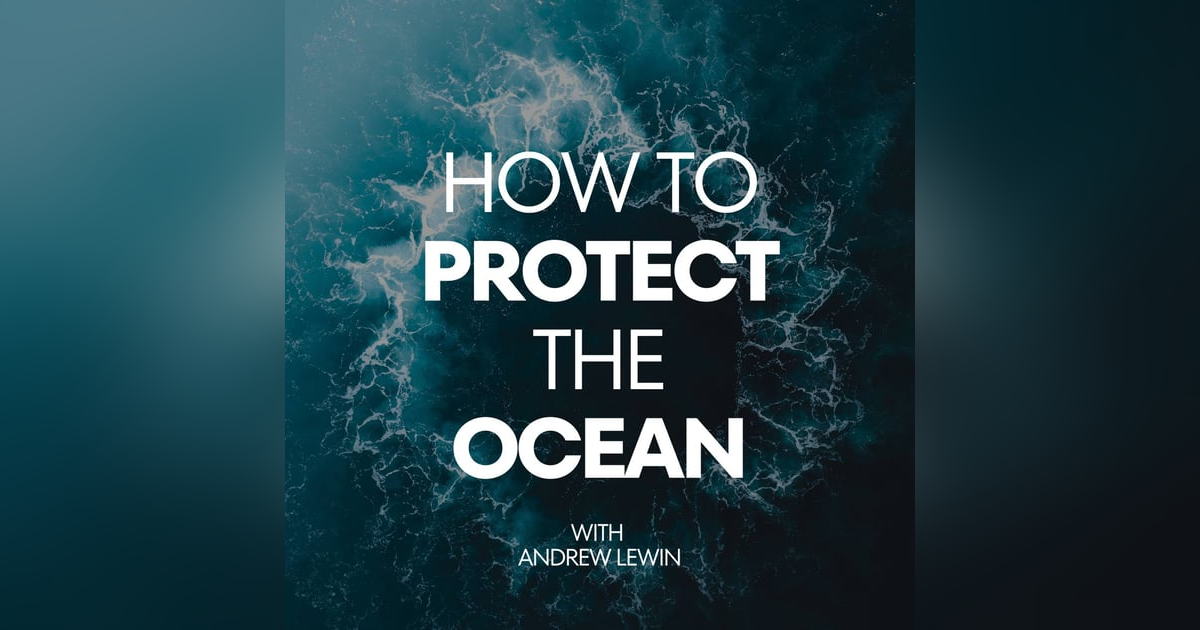The Plight of the North Atlantic Right Whale: A Deep Dive with Oceana Canada

In this episode of the How to Protect the Ocean podcast, host Andrew Luen speaks with Kim Elmslie, Oceanic Canada's campaign director, about the critically endangered North Atlantic right whale and what can be done to save them. The episode delves...
In this episode of the How to Protect the Ocean podcast, host Andrew Luen speaks with Kim Elmslie, Oceanic Canada's campaign director, about the critically endangered North Atlantic right whale and what can be done to save them. The episode delves into the challenges facing the whale population and explores potential solutions to protect these majestic creatures.
Join the conversation on ocean conservation and learn how you can make a difference for the ocean's future.
Oceana Canada North Atlantic Right Whale Campaign:
https://oceana.ca/en/our-campaigns/protect-north-atlantic-right-whales/
Sign Up for Updates on the process: www.speakupforblue.com/oceanapp
Connect with Speak Up For Blue:
Website: https://bit.ly/3fOF3Wf
Instagram: https://bit.ly/3rIaJSG
TikTok: https://www.tiktok.com/@speakupforblue
Twitter: https://bit.ly/3rHZxpc
YouTube: www.speakupforblue.com/youtube
The North Atlantic right whale population has experienced a significant decline over the years, with historical estimates ranging from 10,000 to 21,000 individuals. However, due to commercial whaling in the late 1800s and 1900s, the population plummeted to as low as 100 to 200 whales. After the ban on commercial whaling in 1935, the population slowly began to recover, but it faced new challenges with industrialization, increased shipping, and fishing activities.
Recent years have shown a leveling off in the North Atlantic right whale population, indicating a potential stabilization after a period of steep decline. In a particular summer, 19 calves were born, offering hope for the species. This positive development is especially significant considering there were years with very low calf numbers or even no calves born at all. The fact that 15 calves were presumed alive from the previous summer's births is a promising sign for the future of the population.
The increase in calf births and the stabilization of the population suggest that conservation efforts and management strategies, such as mandatory slowdowns in shipping lanes and ropeless gear initiatives, may be starting to have a positive impact. These measures, along with the strengthening of regulations under the Fisheries Act, have contributed to creating a more favorable environment for the North Atlantic right whales to thrive.
While challenges like ship strikes, entanglement in fishing gear, and the impacts of climate change still exist, the recent trends in the North Atlantic right whale population offer hope for the species' future. Continued efforts to protect and conserve these whales are crucial to ensure their long-term survival and recovery.
In a podcast episode, Kim Elmslie, the campaign director for Oceana Canada, discussed ongoing efforts to protect North Atlantic right whales from ship strikes and entanglements. Each year, measures are announced for both fishing and shipping as part of an annual management strategy. These measures include mandatory speed reductions in certain areas of the Gulf of St. Lawrence, where the whales are known to frequent. Additionally, there are seasonal areas with mandatory speed reductions at the beginning and end of the year when the whales are entering or leaving the region.
One significant development is the consideration of more permanent regulations by Transport Canada. They are looking at establishing a more stable structure for measures like mandatory speed reductions, rather than announcing them annually. This move aims to provide a consistent framework for protecting the whales from ship strikes. The government plans to initiate a consultation process to gather feedback and input from stakeholders and the public before finalizing these regulations.
Advancements in the fishing industry regarding ropeless gear strategies have also been made. The Fisheries Act regulations have been modified to allow for a larger commercial use of ropeless gear. This technology aims to reduce the risk of entanglement for marine mammals, including North Atlantic right whales. By transitioning to ropeless gear, fishermen can deploy their traps without the need for traditional end lines that pose entanglement risks to whales. These regulatory changes demonstrate a proactive approach to addressing the threats posed by fishing gear entanglements to the endangered whale population.
Overall, the efforts to implement more permanent regulations, such as mandatory speed reductions and the adoption of ropeless gear strategies, reflect a commitment to long-term conservation and protection of North Atlantic right whales from ship strikes and entanglements. These regulatory measures, coupled with ongoing research and stakeholder engagement, are crucial steps towards ensuring the survival and recovery of this critically endangered species.
The government is taking steps to implement long-term solutions and regulations to address the threats faced by North Atlantic right whales. This includes changes in fishing gear regulations and whale watching practices. The Fisheries Act, which was restructured about five years ago, has played a role in strengthening regulations related to marine mammals. The act has been instrumental in funding initiatives aimed at protecting marine mammals, including North Atlantic right whales. Additionally, the regulations under the Fisheries Act have been modified to address specific issues such as entanglement of whales in fishing gear. For example, the requirement for end lines on trap lines, which are a common cause of entanglement, has been adjusted to allow for the use of ropeless gear. This change in regulations has paved the way for a larger commercial level of ropeless gear to be used, offering a potential solution to reduce entanglement risks for the whales.
Furthermore, the government has also made adjustments to regulations concerning whale watching practices. These regulations dictate how closely vessels can approach whales, especially endangered species like North Atlantic right whales. By extending the distance at which vessels can approach whales, the government aims to minimize disturbances to these vulnerable marine mammals. These regulatory changes demonstrate the government's commitment to protecting North Atlantic right whales and ensuring their long-term survival. The ongoing efforts to implement these regulations and long-term solutions highlight the importance of proactive conservation measures to safeguard the population of these critically endangered whales.













